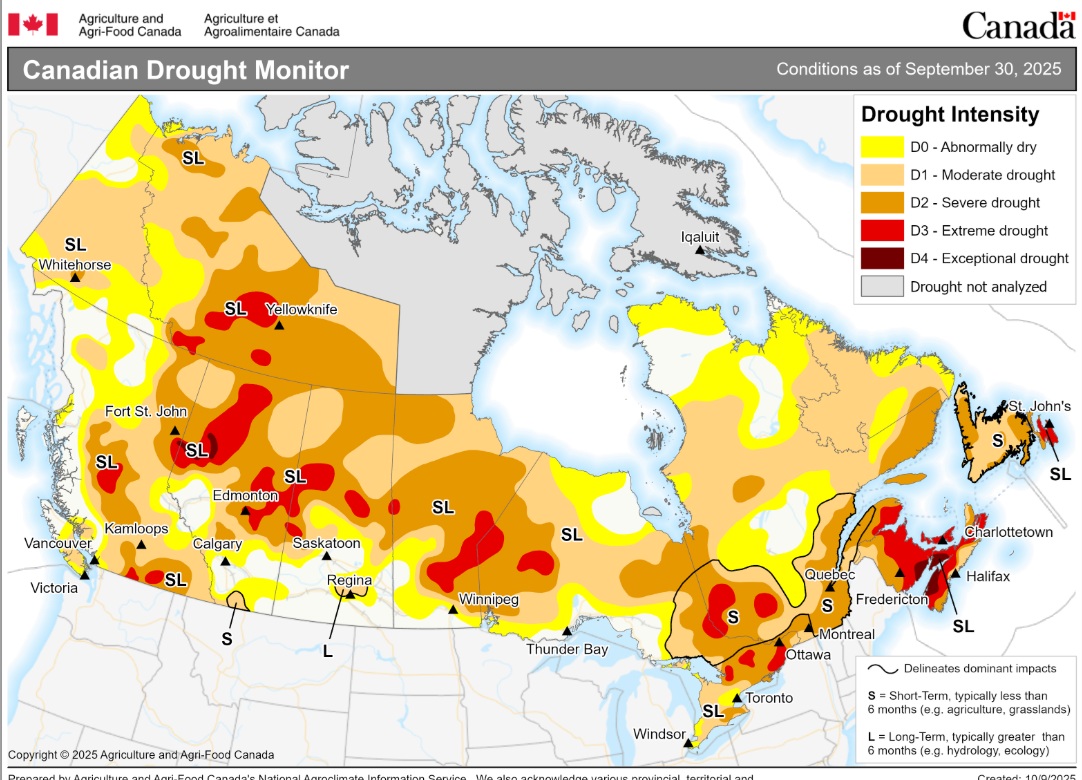After improvement in August, abnormal dryness and drought expanded across Western Canada in September.
The latest monthly update of the Canadian drought monitor shows 64% of Prairie agricultural lands were being impacted by abnormal dryness or some form of drought as of the end of September. That’s up from 59% at the end of August, although still well below 81% in July.
The worst impacts were felt in the western Prairie. Nearly all of Alberta and western Saskatchewan received less than 25% of normal precipitation in September. On the other hand, eastern Saskatchewan and southern Manitoba received above normal precipitation, including a portion of southeastern Saskatchewan and parts of southwestern Manitoba, where localized storms brought up to 200% of normal precipitation.
Temperatures were generally 2 to 5 degrees C above normal across all three Prairie provinces in September, with the warmest temperatures being recorded in Alberta.
Overall, drought persisted and expanded in the western Prairies while moderate improvement occurred in eastern Saskatchewan and southeastern Manitoba, the monitor said.
In central Alberta, expanding pockets of abnormally dry and moderate drought conditions were reported, along with a new pocket of severe drought southwest of Red Deer. Around Edmonton, Lloydminster, and Cold Lake, severe and extreme drought areas grew, while a new area of extreme drought formed east of Edmonton and north of Fort Saskatchewan. Farmers in Ponoka and surrounding districts reported severely parched soils and heavy dependence on irrigation. Feed shortages and poor pastures continue to pressure the livestock sector, the monitor said.
The situation was most critical in northern Alberta, where the Peace Region and north-central areas experienced the greatest deterioration in conditions. Severe and extreme drought expanded, and two exceptional drought pockets developed northwest of Grande Prairie and near Peace River.
In Saskatchewan, western regions received less than 40% of normal precipitation, while parts of the southeast saw more than double their usual rainfall. This helped ease drought east of Regina toward the Manitoba border. However, severe and extreme drought expanded in the central and northern parts of the province — particularly west of North Battleford, near Buffalo Narrows, and around La Ronge.
In contrast, southern Manitoba benefited from significant mid-September storms delivering over 100 mm of rain near Steinbach. The moisture erased moderate drought between Portage la Prairie and Steinbach and replenished topsoil in the southeast. Central Manitoba also saw reduced drought intensity, though severe drought conditions near Flin Flon persisted. Northern Manitoba remained mostly dry, maintaining moderate to severe levels of drought.
